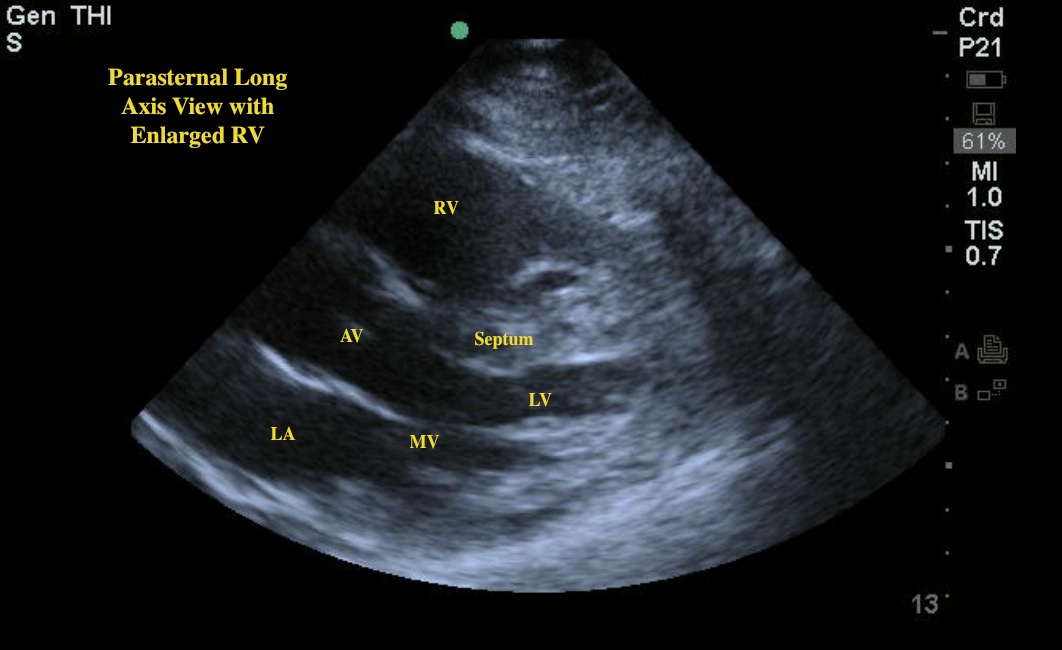This week’s image is brought to us by Dr. Deepa Patel, who was able to make the bedside diagnosis of pulmonary embolus using ultrasound. The first image is a parasternal long axis view with evidence of enlarged RV. This is not the best view to assess chamber size, but even here we can begin to see that there is something abnormal. On the apical-four-chamber view we can compare the RV and the LV side by side. We consider an RV:LV ratio of >1:1 to be abnormal. Here we can see that the RV is larger than the LV. Large PEs that cause right heart strain will enlarge the RV, but so can several other chronic processes like pulmonary HTN. This patient had an additional finding called a “McConnell’s sign” that can be used to distinguish acute right heart strain from a PE from other chronic causes of right heart enlargement. Patients with PE can have distinct regional wall motion abnormalities of the RV. In acute PE often there is no movement of the Mid RV, but preserved motion of the apex. This finding is 77% sensitive and 94% specific for PE. Follow the link to the Ultrasound blog if you would like to watch the video of this patient. Pay close attention to the apex--you can see that it is moving while the rest of the RV is not.



